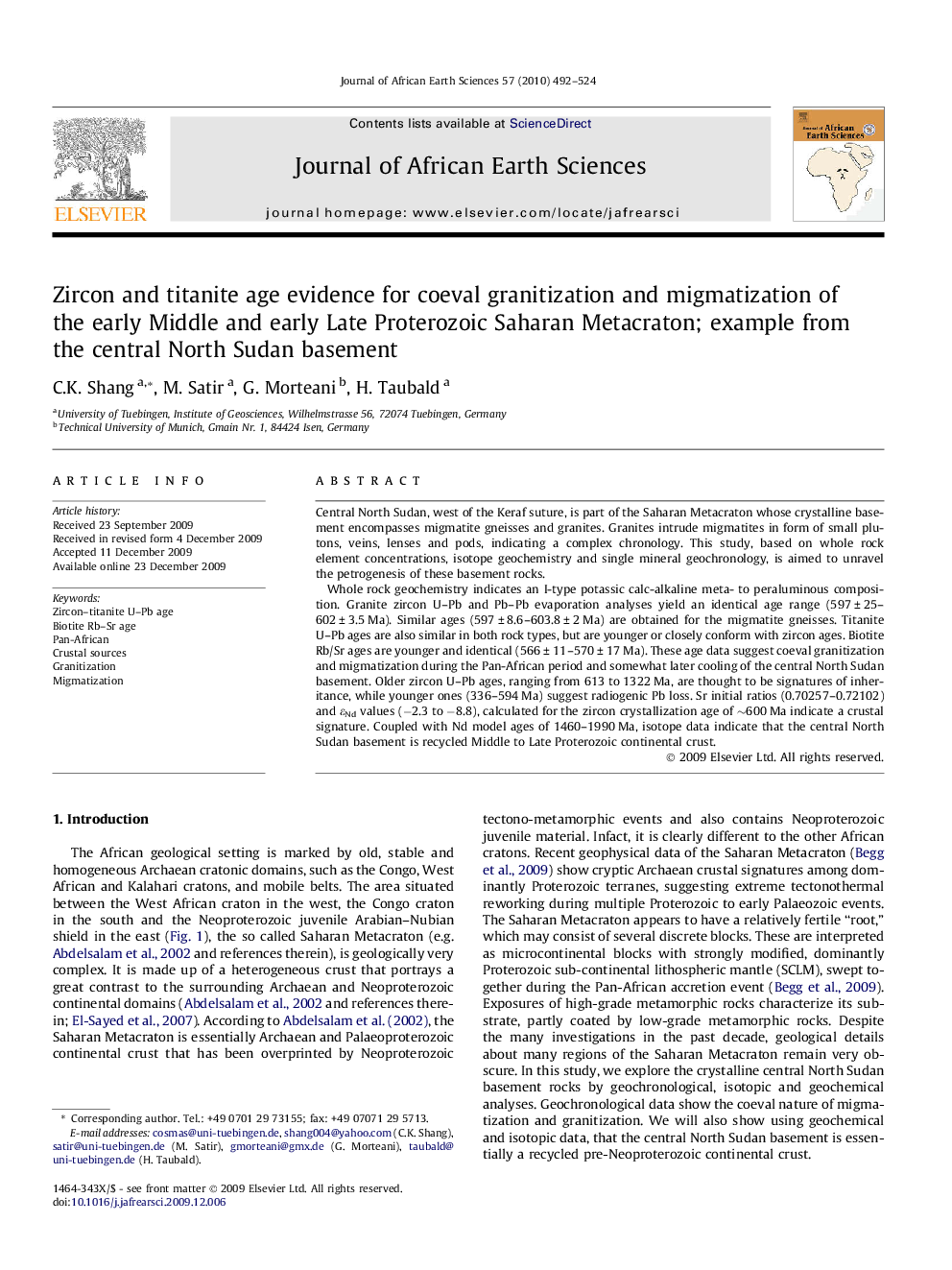| Article ID | Journal | Published Year | Pages | File Type |
|---|---|---|---|---|
| 4729316 | Journal of African Earth Sciences | 2010 | 33 Pages |
Central North Sudan, west of the Keraf suture, is part of the Saharan Metacraton whose crystalline basement encompasses migmatite gneisses and granites. Granites intrude migmatites in form of small plutons, veins, lenses and pods, indicating a complex chronology. This study, based on whole rock element concentrations, isotope geochemistry and single mineral geochronology, is aimed to unravel the petrogenesis of these basement rocks.Whole rock geochemistry indicates an I-type potassic calc-alkaline meta- to peraluminous composition. Granite zircon U–Pb and Pb–Pb evaporation analyses yield an identical age range (597 ± 25–602 ± 3.5 Ma). Similar ages (597 ± 8.6–603.8 ± 2 Ma) are obtained for the migmatite gneisses. Titanite U–Pb ages are also similar in both rock types, but are younger or closely conform with zircon ages. Biotite Rb/Sr ages are younger and identical (566 ± 11–570 ± 17 Ma). These age data suggest coeval granitization and migmatization during the Pan-African period and somewhat later cooling of the central North Sudan basement. Older zircon U–Pb ages, ranging from 613 to 1322 Ma, are thought to be signatures of inheritance, while younger ones (336–594 Ma) suggest radiogenic Pb loss. Sr initial ratios (0.70257–0.72102) and εNd values (−2.3 to −8.8), calculated for the zircon crystallization age of ∼600 Ma indicate a crustal signature. Coupled with Nd model ages of 1460–1990 Ma, isotope data indicate that the central North Sudan basement is recycled Middle to Late Proterozoic continental crust.
